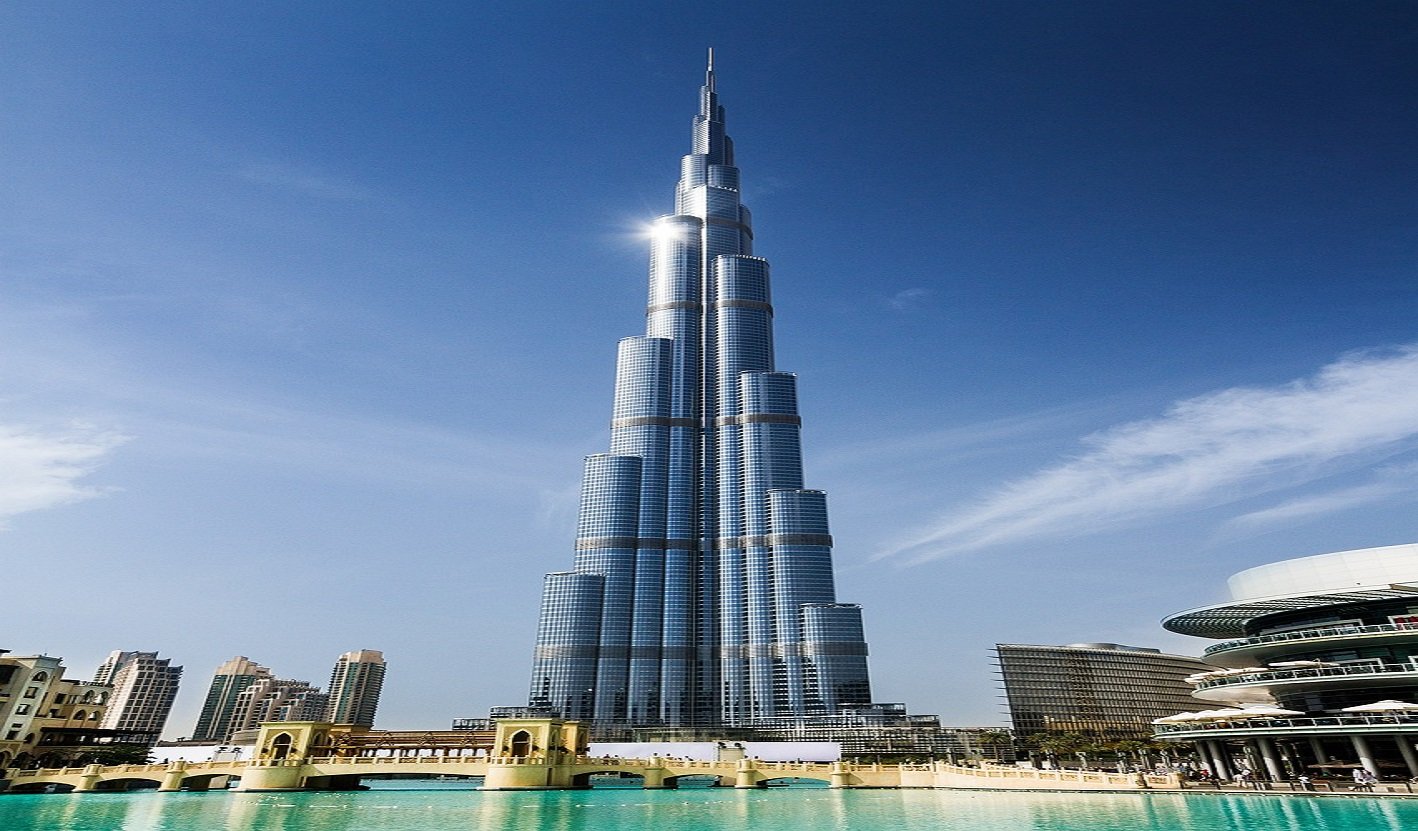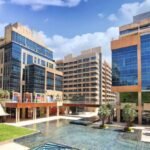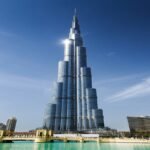Dubai is a city that defies expectations. It’s a place where towering skyscrapers reach into the sky, luxury is a way of life, and architectural feats often feel like a glimpse into the future. With every passing year, Dubai continues to reshape its skyline, constantly pushing boundaries and setting new standards. When you think of Dubai, you almost can’t help but picture these monumental structures—buildings that aren’t just tall but also showcase incredible designs, engineering, and ambition.
These iconic skyscrapers don’t just change the city’s landscape; they tell the story of Dubai’s rapid growth, its desire to stand out globally, and its determination to create a futuristic city that’s both luxurious and practical. Let’s dive into some of the tallest and most renowned buildings in Dubai, exploring why they’ve become symbols of the city.
Famous Buildings in Dubai: Defining the Skyline
Before we get into the heights and architectural details, it’s worth highlighting the famous buildings that have helped define Dubai’s skyline. These structures aren’t just about height; they are symbols of luxury, business hubs, and cultural statements. Some of the buildings we’ll explore include
- Burj Khalifa
- Marina 101
- Princess Tower
- Burj Al Arab
- Almas Tower
- The Address Boulevard
- Emirates Towers
- JW Marriott Marquis
- One Za’abeel
- Cayan Tower
Each of these buildings represents something unique about Dubai, whether it’s luxury living, corporate business, or a breathtaking architectural statement. But they all share one thing in common: they shape the identity of Dubai.
The Tallest Buildings in Dubai
Jaw-droppingly tall skyscrapers dominate Dubai’s skyline. These structures don’t just create a visual impact; they embody the city’s ambition to lead in architecture, business, and luxury living. And while these buildings are beautiful, they also serve functional roles, from luxury residences to office spaces to cultural landmarks.
1. Burj Khalifa: The Tallest Building in the World
If you were to name one building that encapsulates everything Dubai stands for, it would have to be the Burj Khalifa. Standing at 828 meters (2,717 feet), it is the tallest building in the world. The Burj Khalifa is so much more than just a skyscraper; it’s an icon of Dubai itself.
Designed by architect Adrian Smith, this building is both a marvel of modern engineering and a work of art. The structure’s design is inspired by the desert flower Hymenocallis, tapering into a spire that can be seen from miles away. It’s not just tall; it’s innovative. The Burj Khalifa features 163 floors, comprising luxury residences, office spaces, and high-end restaurants. The observation deck on the 148th floor offers a breathtaking view of the city, the desert, and the ocean.
Building the Burj Khalifa was a challenge, to say the least. The desert’s heat, combined with strong winds, posed unique engineering hurdles. The team utilised advanced concrete and steel technologies to design a building that could withstand environmental conditions while providing comfort and luxury within. What’s also remarkable is the Burj Khalifa’s role as a cultural symbol. It’s not just a place to work and live but a monument to Dubai’s ambitions as a global leader in innovation and progress.
2. Marina 101—A Close Rival
At 425 meters (1,394 feet), Marina 101 doesn’t quite beat the Burj Khalifa in height, but it does hold the title of being the tallest residential building in the world. Located in the popular Dubai Marina area, Marina 101 combines residential spaces with hotel accommodations, offering both luxury and practicality.
The building has 101 floors and features a sleek, modern design. It’s a striking contrast to the Burj Khalifa, with its cylindrical shape making a bold architectural statement. Its location within the Dubai Marina area, a hub for entertainment, dining, and leisure, adds to its allure. Marina 101 offers spectacular views of the Persian Gulf, Palm Jumeirah, and the sprawling city.
While it doesn’t surpass the Burj Khalifa in height, it remains a significant landmark in the city, and its residential penthouses are among the most sought-after addresses in Dubai. The combination of its height, luxurious interiors, and vibrant location makes Marina 101 a symbol of modern living in Dubai.
3. Princess Tower—A Hidden Gem in the Marina
At 413 meters (1,356 feet), Princess Tower might not be as tall as the Burj Khalifa or Marina 101, but it’s still one of the tallest residential towers in the world. Completed in 2012, this building is located in Dubai Marina and is known for its elegant design and panoramic views.
What sets Princess Tower apart from other skyscrapers is its intimate feel. Despite its height, it offers a more residential atmosphere compared to the city’s business-driven buildings. With 101 floors, it features a mix of luxury apartments, ranging from studios to penthouses, offering breathtaking views of the Arabian Gulf. The amenities are top-notch, including an indoor swimming pool, fitness centre, and sauna.
For those who want to live in the heart of Dubai Marina but prefer a quieter environment, Princess Tower offers the perfect balance of luxury and comfort.
What Makes Dubai’s Tallest Buildings So Special?
So, what exactly makes Dubai’s tallest buildings stand out from the crowd? Several factors contribute to their uniqueness, and it’s not just about height.
1. Innovative Architecture and Design
Dubai’s skyscrapers showcase some of the most innovative architecture in the world. Take Burj Khalifa, for example. Its Y-shaped structure is designed to optimise views and reduce wind forces. The design incorporates traditional Arabic elements while maintaining a sleek, modern aesthetic. Similarly, Marina 101 features a smooth cylindrical shape, making it a standout amidst the more angular designs of other skyscrapers. It’s clear that Dubai’s architectural vision isn’t just about height; it’s about creating structures that are beautiful, functional, and forward-thinking.
2. Cutting-Edge Engineering
Building these skyscrapers in the desert comes with its own set of challenges. High winds, extreme temperatures, and shifting sands all present problems that require innovative solutions. Engineers working on these buildings have had to develop new techniques and technologies to make sure these structures are not only safe but also sustainable.
The Burj Khalifa stands as a testament to its structure, which uses reinforced concrete and steel to support its immense height. Special insulation materials help regulate the temperature inside, keeping it comfortable regardless of the outside temperature. Other buildings, like the Princess Tower, also employ advanced engineering techniques to withstand winds and seismic activity, ensuring they stand the test of time.
3. Cultural and Symbolic Importance
Dubai’s tallest buildings don’t just serve practical purposes they represent something much more profound. They are symbols of the city’s identity. Dubai’s rapid growth is reflected in its skyline, which tells the story of a town that went from a desert outpost to a global hub for business and tourism. Buildings like the Burj Khalifa are more than just architectural feats; they represent Dubai’s ambitions to make a mark on the world stage. The Burj Al Arab, for instance, is a symbol of luxury, designed to resemble a sail, an homage to the city’s maritime heritage.
4. Transforming the Urban Landscape
Dubai’s skyscrapers have also completely transformed its urban landscape. Before the rise of these iconic structures, Dubai was a small fishing village. Now, the skyline is a mix of business districts, luxury living spaces, and cultural landmarks. Buildings like One Za’abeel, with its futuristic sky bridge, and Cayan Tower, with its twisting design, challenge conventional notions of what a skyscraper should be. These buildings aren’t just changing the skyline; they’re changing what it means to live and work in Dubai.
Sustainability: A Growing Focus in Dubai’s Skyscrapers
While Dubai’s skyscrapers are known for their luxury and grandeur, sustainability is becoming an increasingly important factor in their design and construction. As the city grows, so does its commitment to reducing its environmental footprint.
The Burj Khalifa, for instance, utilises energy-efficient systems and incorporates water recycling technologies to minimise its environmental impact. One Za’abeel, with its innovative cantilever, also incorporates sustainable building materials and systems that reduce energy usage while maximising the use of natural light.
It’s clear that sustainability is becoming just as important as design in Dubai’s architectural projects, ensuring that these beautiful buildings are also environmentally responsible.
The Future of Dubai’s Skyline
Looking ahead, Dubai isn’t slowing down when it comes to building taller, more innovative skyscrapers. The Dubai Creek Tower, currently under construction, is expected to surpass the Burj Khalifa in height, potentially becoming the world’s tallest structure.
Dubai’s future skyscrapers are likely to continue pushing the envelope in terms of design, engineering, and sustainability. As technology advances, we may see smart buildings that are even more energy efficient or structures with more green spaces integrated into their designs. Whatever comes next, it’s clear that Dubai’s skyline will continue to evolve and captivate the world.
Dubai’s Skyscrapers: More Than Just Tall Buildings
Dubai’s tallest buildings aren’t just tall; they are symbols of the city’s drive to excel. They represent luxury, ambition, and innovation in ways that few other cities can match. From the Burj Khalifa, standing as a global symbol of what’s possible, to buildings like Marina 101 and Princess Tower, which provide world-class living, these skyscrapers have transformed Dubai into one of the most impressive cities in the world.
Dubai’s skyline is not only about pushing limits in terms of height but also about embracing sustainable development and integrating advanced technology. These buildings represent the future, not just of Dubai, but of urban development worldwide. It’s a city that’s always looking upward, and as we’ve seen, there’s no limit to how far it can go.
FAQS
- What is the tallest building in Dubai?
The tallest building in Dubai is the Burj Khalifa, standing at 828 meters (2,717 feet), making it the tallest building in the world. - What is Marina 101 known for?
Marina 101 is the tallest residential building in the world, reaching a height of 425 meters (1,394 feet), and combines luxury residences with hotel accommodations. - How tall is Princess Tower?
Princess Tower stands at 413 meters (1,356 feet) and is one of the tallest residential towers in Dubai, offering panoramic views of the Arabian Gulf. - Why are Dubai’s skyscrapers so unique?
Dubai’s skyscrapers are unique due to their innovative architecture, cutting-edge engineering, and symbolic representation of the city’s growth, ambition, and cultural identity. - Are Dubai’s skyscrapers environmentally friendly?
Yes, many of Dubai’s skyscrapers, such as the Burj Khalifa and One Za’abeel, incorporate sustainable building materials, energy-efficient systems, and water recycling technologies to minimise their environmental impact.

















